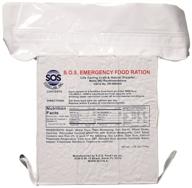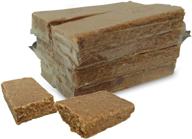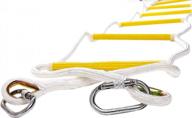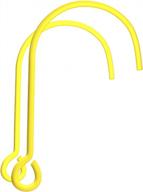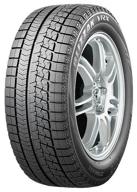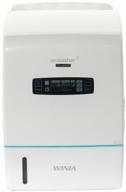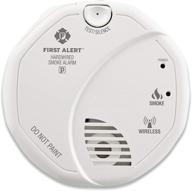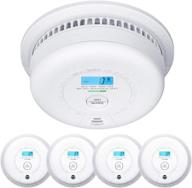Another interesting products
How to install smoke and carbon monoxide detectors in your home?
Installing smoke and carbon monoxide detectors is an important step to protect your home and family from potential danger. Here are some tips on how to properly install them:
Choose locations
- Smoke detectors should be installed in every bedroom, outside each sleeping area, and on every level of the home.
- Carbon monoxide detectors should be located near fuel-burning appliances like furnaces, water heaters, fireplaces, stoves, and generators.
- Avoid installing near windows, doors, or ducts where drafts could interfere with their operation.
Install mounting brackets
Attach mounting brackets securely to the ceiling or wall following the manufacturer's instructions. Make sure screws are anchored in a stud or joist.
Connect the detectors
Twist the detector onto the mounting bracket until it clicks into place. If the model is battery-powered, insert fresh batteries before mounting. For hardwired models, connect the wires as directed.
Test the detectors
After installing, test each detector to make sure it is functioning properly and alerting as expected. Smoke detectors can be tested with the test button or smoke spray. Carbon monoxide detectors should be tested with a can of simulated CO gas.
Be sure to replace batteries and test detectors periodically as recommended. Properly installed smoke and carbon monoxide detectors provide vital protection for you and your family.
Top products in 🧯 Fire Safety
How to maintain and test smoke and carbon monoxide detectors?
Proper maintenance and testing is essential to ensure smoke and carbon monoxide detectors function properly when you need them. Here are some tips:
Clean the detectors
Dust and debris can interfere with smoke and CO sensors. Gently vacuum the exterior vents 2-3 times per year. Wipe the cover with a damp cloth if needed.
Change batteries
- Replace batteries at least once a year. More often if the low battery warning chirps.
- Use only the size and type of battery specified by the manufacturer.
- If unsure when batteries were last replaced, install new ones.
Test smoke detectors
Test monthly by pressing the test button until the alarm sounds. 3 beeps in a row indicates it's working properly. You can also test by wafting smoke near the sensor using matches or a smoke spray. The alarm should sound within seconds.
Test carbon monoxide detectors
CO detectors should be tested monthly as well, by pressing the test button. Get in the habit of testing them when you test your smoke detectors. You can also use a can of simulated CO to test response.
| Frequency | Smoke Detector | CO Detector |
|---|---|---|
| Monthly | Test button or smoke spray | Test button or CO spray |
| Annually | Replace batteries | Replace batteries |
Following the manufacturer's instructions for maintenance and testing ensures your detectors will provide alerts when dangers like smoke or carbon monoxide are present. Protect your family by testing detectors regularly.
How to prevent false alarms with smoke and carbon monoxide detectors?
False alarms from smoke or carbon monoxide detectors can be a nuisance. Here are tips to help prevent them:
Proper placement
- Avoid installing near kitchens and bathrooms where steam can set them off.
- Keep at least 10 feet from sources of combustion particles like fireplaces, furnaces, and candles.
- Install at least 3 feet from ventilation ducts that can carry particles.
Similar products
Control cooking smoke
Smoke from cooking is a common cause of false alarms. These tips can help prevent them:
- Use your stove vent hood when cooking.
- Adjust burner flames to not extend past cookware.
- Limit smoke by avoiding burnt foods.
- Wave a towel near the detector to clear small amounts of smoke.
Keep clean
Dust, debris, and dead insects can obstruct smoke sensors. Gently vacuum vents 2-3 times per year.
Replace batteries
Low batteries can cause false alarms. Replace batteries at least once per year.
Replace detectors
Smoke detectors should be replaced every 8-10 years as sensors lose sensitivity over time.
| Cause | Solution |
|---|---|
| Cooking smoke | Use vent hood, avoid burnt foods |
| Low batteries | Replace batteries annually |
| Dirty vents | Gently vacuum every few months |
With some care taken in their placement and maintenance, smoke and carbon monoxide detectors can alert you to real dangers without excessive false alarms.
How to respond when smoke or carbon monoxide detectors go off?
Smoke and carbon monoxide detectors alert you to potential danger in your home. It's important to respond quickly and properly when they sound. Here's what to do:
Smoke detector alarm
- Evacuate everyone from the home immediately.
- Do not stop to investigate the cause or collect belongings.
- Get low to the floor and cover your nose and mouth with a damp cloth if smoke is present.
- Call 911 from outside the home.
- Do not reenter the home until firefighters say it is safe.
Carbon monoxide detector alarm
- Evacuate the home and move everyone to fresh air immediately.
- Call 911 to report a possible CO leak.
- Do not reenter the home until emergency responders say it is safe.
- Seek medical attention if you feel dizzy, lightheaded, or ill.
| Alarm Type | Response |
|---|---|
| Smoke detector | Evacuate, call 911, do not reenter until safe |
| CO detector | Evacuate, call 911, seek medical help if ill |
Never ignore alarms from smoke or CO detectors. Not responding appropriately can lead to injury or even death from smoke inhalation or carbon monoxide poisoning. Make sure everyone in your household knows how to react to these alarms.
Practice family fire and emergency drills regularly to prepare. If an alarm ever sounds, get out immediately and call for help. Don't go back in until you know it's safe or you risk becoming a victim yourself.
How to choose the best locations to place smoke and carbon monoxide detectors?
Strategic placement is important to maximize the effectiveness of smoke and CO detectors. Follow these guidelines:
Smoke detectors
- Install on every level of the home.
- Place in every bedroom.
- Install near, but not in, kitchens and bathrooms.
- Avoid spots near heating and cooling ducts.
- Mount on the ceiling in center of room if possible.
CO detectors
- Install near fuel-burning sources like furnaces, fireplaces, stoves.
- Place at eye level as CO is similar weight to air.
- Do not install right next to sources, but within 15 feet.
| Location | Type of Detector |
|---|---|
| Bedrooms | Smoke detector |
| Hallway near bedrooms | Smoke detector |
| Kitchen | CO detector |
| Garage | CO detector |
Smoke rises and CO mixes evenly with air, so ideal install locations differ. Follow manufacturer instructions for mounting height and distance from walls or ventilation ducts.
Strategic placement ensures you'll be alerted quickly to smoke or CO before it spreads. Installing according to guidelines gives your detectors the best chance to provide warning of danger.
How To Install The 3 Pack Combination Smoke And Carbon Monoxide Detector?
Installing the 3 Pack Combination Smoke and Carbon Monoxide Detector is a simple process that can be completed in a few easy steps:
- Choose the location: Select the best location to install the detector. It should be placed on the ceiling or high up on the wall, away from any corners or vents.
- Install the mounting bracket: Use the provided screws or adhesive tapes to install the mounting bracket on the chosen location.
- Attach the detector: Attach the detector to the mounting bracket by twisting it clockwise until it clicks into place.
- Test the detector: Test the detector to ensure it's working properly by pressing the test button.
- Install batteries: If the detector is battery-operated, install the batteries according to the manufacturer's instructions.
- Set up the detector: Follow the manufacturer's instructions to set up the detector, including setting the time and date.
- Enjoy peace of mind: Once the detector is installed and set up, you can rest easy knowing that you and your family are protected from the dangers of smoke and carbon monoxide.
What Is The Best Way To Mount The 3 Pack Combination Smoke And Carbon Monoxide Detector?
Here are some tips for the best way to mount the 3 Pack Combination Smoke and Carbon Monoxide Detector:
It's important to follow the manufacturer's instructions for the specific model of the detector being installed to ensure proper installation and functionality.





